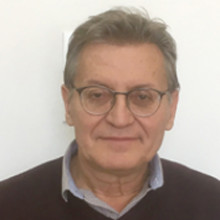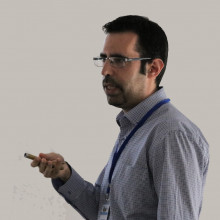Research directions / Objectives
The research targets the understanding the formation mechanisms, the stability, the structure (geometric and/or electronic) and the properties (optical activity, chemical reactivity, catalytic activity) of clusters and free biomolecules and also to study nanostructured materials made out of clusters.
Our efforts in obtaining information about the stability and structure of free clusters and biomolecules with photofragmentation experiments of mass selected clusters, is recently focused in a new experimental technique that we proposed and presented in a series of papers and relies on crossed molecular beam scattering. This method is significantly faster and more efficient for obtaining fragmentation cross sections, without mass selection of the individual clusters.
Recently, we apply our know-how from the basic research studies for investigations in several applied fields such as:
Mass spectroscopy in combination with laser induced break down spectroscopy (LIBS). Such combined studies are applied for the analysis of the composition and structure of (in collaboration with Prof. D. Anglos). Second Poster Award to Olga Kokkinaki, M. Velegrakis, D. Anglos and C. Mihesan for the presentation of their poster “Combined laser induced breakdown spectroscopy and mass spectrometry for the analysis of cultural heritage materials” in “TECHNART 2011” (Non-destructive and Microanalytical Techniques in art and cultural Heritage) which was held in Berlin, April 26-29, 2011.
- Nanostructured materials produced by laser ablation in liquids in conjugation with biomolecules. The object of is the formation of metallic or metal oxide bionanoconjugates (BNC’s). . This project is performed in collaboration with Centre of Advanced Research in Nanobioconjugates and Biopolymers, Iasi, Romania and a postdoc (C. Mihesan) is supported from Romanian National Authority for Scientific Research, CNCS – UEFISCDI, project number PN-II-RU-TE-2011-3-0174. We have already achieved the synthesis of magnetic iron oxide particles coated with a hydrophilic shell of citric acid, by a one-step technique based on laser ablation in liquid. A presentation and a paper are submitted for publication.
- Recently we apply Uv-Vis and fluorescence spectroscopy to analyze wines by monitoring the spectroscopic fingerprints through the entire manufacturing process from grapes to the final product. This project is performed within the framework of a “Thales” program in cooperation with other laboratories of the University of Crete (NMR, GC-MS) and the Technological Educational Institute of Crete (FTIR). In this activity three young scientist are employed: A. Philippidis (postdoc), M. Poulakis (PhD) and A. Papadaki (MSc).









